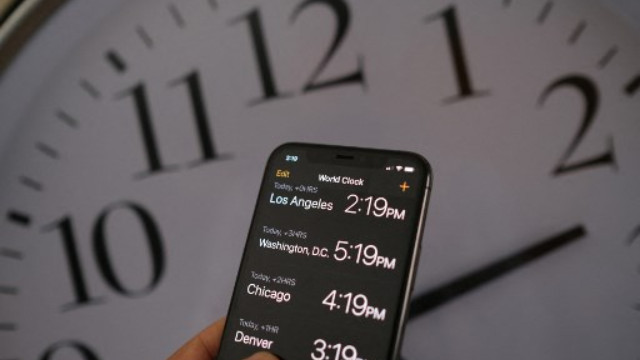On Sunday, the United States switched over from standard time to daylight saving time (DST). In most parts of the United States, clocks have already moved one hour ahead as people prepare themselves for more daylight in the evening in the months ahead. However, not everyone is happy about it the switch which will continue until November when standard time returns. Let’s take a closer look: Sleep scientists and biologists say even a small change can have an impact on Circadian rhythm – the body’s internal 24-hour body clock which regulates cycles of alertness and sleepiness by responding to light changes in our environment. According to Yahoo, a disruption in Circadian rhythm can leave people feeling drowsy, moody, and with an increased appetite. This can leave our motor functions impaired – which can have real-world consequences. A 2009 study showed a 3.6 per cent increase in mining workplace injuries on the Monday after the switch to daylight savings time. Meanwhile, another study showed a six per cent rise in car accidents during a 10-year period in the United States following the change to DST, as per Yahoo.
Experts say it is also bad for the heart.
According to a piece in The Conversation, researchers have found that heart attacks and sleep deprivation in teens increase as the clocks “spring ahead” every March. Indeed, NPR quoted a study as showing that hospitalisations for atrial fibrillation increased in the aftermath of the change to daylight savings time. “I was very surprised,” Dr Jay Chudow, a cardiologist at Montefiore Health, told the outlet. “It’s just a one-hour change” but it shows how sensitive our bodies may be to circadian rhythm disruptions. Yahoo quoted Dr Amneedt Sandhu, a cardiology fellow at the University of Colorado, who led a sleep study on heart health as saying the Monday after the switch to DST saw a 25 per cent increase in heart attacks compared to other Mondays of the year. “Perhaps the reason we see more heart attacks on Monday mornings is a combination of factors, including the stress of starting a new work week and inherent changes in our sleep-wake cycle,” Sandhu said. “With daylight saving time, all of this is compounded by one less hour of sleep. Whatever the reason, he said, the findings may indicate a need to better staff hospitals the Monday after setting our clocks forward… If we can identify days when there may be surges in heart attacks, we can be ready to better care for our patients.” The Conversation piece noted that the largest advantage daylight saving time offers is an extra hour of light until November. This is time people can use to stay out later playing sports, eating, or shopping. [caption id=“attachment_12214182” align=“alignnone” width=“640”] Representational purposes/Reuters[/caption] However, the extra light postpones the release of melatonin (the sleep hormone) in the brain. – which can be particularly damaging to teenagers who are already susceptible to sleep problems. As sleep expert Adam Spira, PhD, MA, a professor in Mental Health, told John Hopkins, “Exposure to more light closer to bedtime makes it harder to fall asleep at our usual bedtime, and can reduce the amount of sleep we’re able to get each night.” “The consequences of insufficient sleep include decreases in cardiovascular health, increases in diabetes and obesity, poorer mental health, lower cognitive performance, and an increase in the risk of motor vehicle accidents,” Spira summed up. Congress dithers, Americans divided The twice-a-year ritual – no time change is observed in Hawaii, most of Arizona, Puerto Rico, the US Virgin Islands, American Samoa, Guam and the Northern Marianas – has led some members of Congress to push to make daylight saving time permanent. The Senate in March passed a bipartisan bill, named the Sunshine Protection Act, to end the back and forth. The House has not acted on the measure.
However, experts say making daylight saving time permanent is the wrong way to go.
According to NPR, both the American Academy of Sleep Medicine and the American Medical Association agree that standard time ought to be made permanent. The AASM in a recent statement said, “Standard time is closely aligned with the position of the sun, which is important for the body because sunlight is the most powerful external cue for the human circadian rhythm.” “Human circadian rhythms are very closely linked to the rising and setting of the sun,” AASM president Jennifer Martin told the outlet. “Light in the morning is very important,” the psychologist added. “Restoring permanent, year-round standard time is the best option for our health and well-being” Martin says. Meanwhile, Americans remain divided on the subject. A poll conducted in October 2021 found that most people in the United States want to avoid switching between daylight saving and standard time, though there is no consensus behind which should be used all year. The poll from The Associated Press-NORC Center for Public Affairs Research found only 25 per cent of those questioned said they preferred to switch back and forth between standard and daylight saving time. Meanwhile, 43 per cent said they would like to see standard time used during the entire year. Another 32 per cent said they would prefer that daylight saving time be used all year. With inputs from agencies Read all the Latest News , Trending News , Cricket News , Bollywood News , India News and Entertainment News here. Follow us on Facebook, Twitter and Instagram.


)

)
)
)
)
)
)
)
)



